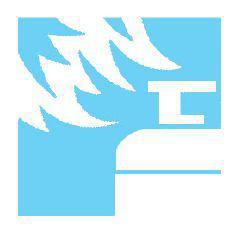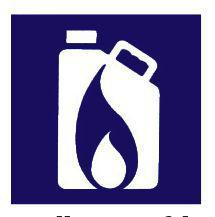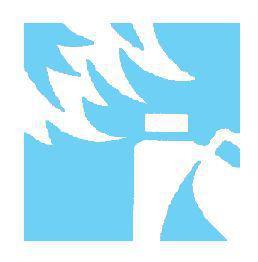SAS Urban Survival Handbook (15 page)
Read SAS Urban Survival Handbook Online
Authors: John Wiseman
Tags: #Health & Fitness, #Reference, #Survival, #Fiction, #Safety, #Self-Help, #Personal & Practical Guides, #General, #Survival Skills

- ◑
NEVER
seal off ventilation or airbricks. - ◑
NEVER
use the heater while you are in the bath. - ◑
ALWAYS
open the door and windows when you are using the heater.
Gas alarms
Unfortunately, there are no domestic gas alarms or detectors—although there are quite simple devices in use in industry. Some can even detect the presence of carbon monoxide. Most people already have smoke alarms and, as soon as gas detectors become available, ‘every home should have one’!
BOTTLED/CYLINDER GAS
 For those without a mains supply, two kinds of liquefied petroleum gas (LPG) are widely available:
For those without a mains supply, two kinds of liquefied petroleum gas (LPG) are widely available:
propane
and
butane.
Neither has a noticeable smell so a stenching agent is usually added. The smell is similar to that of mains gas.
Propane
is not widely used indoors, because it is stored under great pressure, and this increases risk. When it is used to fire domestic central heating, it is stored outside either in a bulk tank (which is replenished by a tanker) or in large cylinders beside the house. In Britain, a maximum of four cylinders of 47 kg capacity is permitted.
Butane
cylinders are mainly used to fuel portable heaters. The cylinders of both gases should be treated with care. DON’T knock, handle them roughly or bang them to see if they are empty. DON’T subject them to heat or leave them exposed to sunlight or rain.
Both propane and butane have other uses. Both may be used for blow-torches to burn off paint or braze metal. Butane is common as lighter fuel, for camping gas and even cordless hair curlers (see POISONS). REMEMBER that these gases are
POISONOUS.
Changing cylinders
Follow manufacturer’s and supplier’s instructions to the letter. If these are incomplete or confusing, DON’T guess! Call in an expert to show you how to change cylinders safely and easily.

WARNING
Good ventilation is required to allow exhaust gases to escape—and to avoid the build-up of condensation. NEVER block established vents in walls and windows or attempt to seal every draught from a room. Beware double glazing! You may need to provide extra ventilation.
Portable heater dangers
FIRE! There are thousands of domestic fires every year caused by heaters which have been placed too close to furnishings, or knocked over.
Some portable heaters are fitted with a special safety device which shuts off the gas if there is insufficient air for combustion. SOME DO NOT! Most shut off the supply if the pilot light goes out. SOME MAY NOT—or may not be working properly. Have the appliance serviced regularly (once a year).
- ◑
NEVER
place anything over a heater—especially clothes for drying—many fires start like this! - ◑
NEVER
position a portable heater in a corridor. It may be knocked over or block an escape route. - ◑
NEVER
store gas cylinders below ground in a cellar or basement. Gas is heavier than air and could be undetected if a leak occurred, creating a severe fire risk. - ◑
AVOID
inhalation of gases. Breathing low concentrations will cause dizziness and nausea. Higher concentrations may asphyxiate or lead to death. - ◑
AVOID
contact with liquid gases. They can cause ‘burns’ similar to frostbite. Wash areas affected with warm water for at least ten minutes. Flush out eyes with warm running water for at least ten minutes. If in doubt—always seek medical attention. - ◑
KEEP CYLINDERS UPRIGHT
—in case the valve leaks. - ◑
DON’T
knock or kick containers—there is enormous pressure inside. Faults in the cylinder could lead to explosion. - ◑
NEVER
use portable gas heaters in bathrooms or other small rooms where there is too little ventilation. - ◑
LEAKS:
Turn off the cylinder immediately if you suspect a leak. Open doors and windows to ventilate. Take heater outdoors. If leak not immediately traceable, brush liquid detergent over connectors: it will bubble at the escape point. - ◑
NEVER
leave a heater on when you intend to go to bed or go to sleep. - ◑
NEVER
knock a heater over, especially when it is on. Liquid gas may escape causing a fire/explosion risk.

EMERGENCY!
CYLINDER FIRE
- ▶
In the event of a fire involving a gas cylinder: Turn off the gas at the cylinder Move it away from the flames Use a fire extinguisher on the flames BUT - ▶
If you cannot reach the cylinder, or if the fire is spreading:
GET OUT!
Get well clear of the house, call the fire brigade and tell them a gas cylinder is involved in the fire

WARNING
Gas is heavier than air. A leak will always travel downwards, possibly downstairs, possibly accumulating in a basement. A leaky cylinder stored in a basement could fill the basement with gas—as could a leak from a pipe under the floor above.
If you smell gas, do not enter the basement or switch lights off or on. Extinguish all naked flames/cigarettes. If you have a mains supply, turn it off at once—and report the problem (see EMERGENCY!: GAS LEAK panel).
LIQUID FUEL
 Two grades of fuel oil—paraffin and gas oil—are common in domestic use. Both are a fire risk and should be treated with respect. Both produce carbon monoxide when burning (see Gas). If a fire starts, the result may be the spillage of burning liquid—which is extremely dangerous. Use a fire extinguisher—a dry extinguisher is suitable—aimed at the base of the fire and into the appliance.
Two grades of fuel oil—paraffin and gas oil—are common in domestic use. Both are a fire risk and should be treated with respect. Both produce carbon monoxide when burning (see Gas). If a fire starts, the result may be the spillage of burning liquid—which is extremely dangerous. Use a fire extinguisher—a dry extinguisher is suitable—aimed at the base of the fire and into the appliance.
PARAFFIN
Paraffin is also known as kerosene. It is used for portable heaters and blow lamps, although many people still use old paraffin lamps (oil lamps). In some appliances—heaters and oil lamps—the fuel soaks up a wick. Blow lamps and storm lanterns require the paraffin to be pressurized by pumping air into the sealed paraffin reservoir.
Paraffin heaters
Paraffin heaters are safe when used properly, but are the cause of many fires. The heater must be placed on a level surface—away from draughts. If you set it in a fireplace, partially block the chimney to reduce draughts. Check the flame is burning blue (not yellow or orange) and not flickering in a draught.
It’s not advisable to buy secondhand heaters. They may be dangerous. New ones supply a special trimmer for the wick. Use it every time you fill the reservoir.
Make sure there is plenty of air coming into the room. Paraffin heaters will produce deadly carbon monoxide as well as water vapour, which can lead to condensation problems. Don’t seal off every draught. Don’t block airbricks or fixed vents.

WARNING
When going to bed, you MUST extinguish a paraffin heater. Do so at least 20 minutes before retiring, and give the heater a final check bef ore you leave it for the night. Make sure the wick is not still smouldering.
Refilling tank
Always use paraffin—NEVER petrol. If reservoir is removable take it outdoors to refill. Use a funnel and wipe any spillages from reservoir before replacing. It is easier to refill a detachable reservoir from a small storage tank with a draw-off tap than to pour paraffin from a can—but keep the tank/can in the garden shed, if you have one, not the house.
